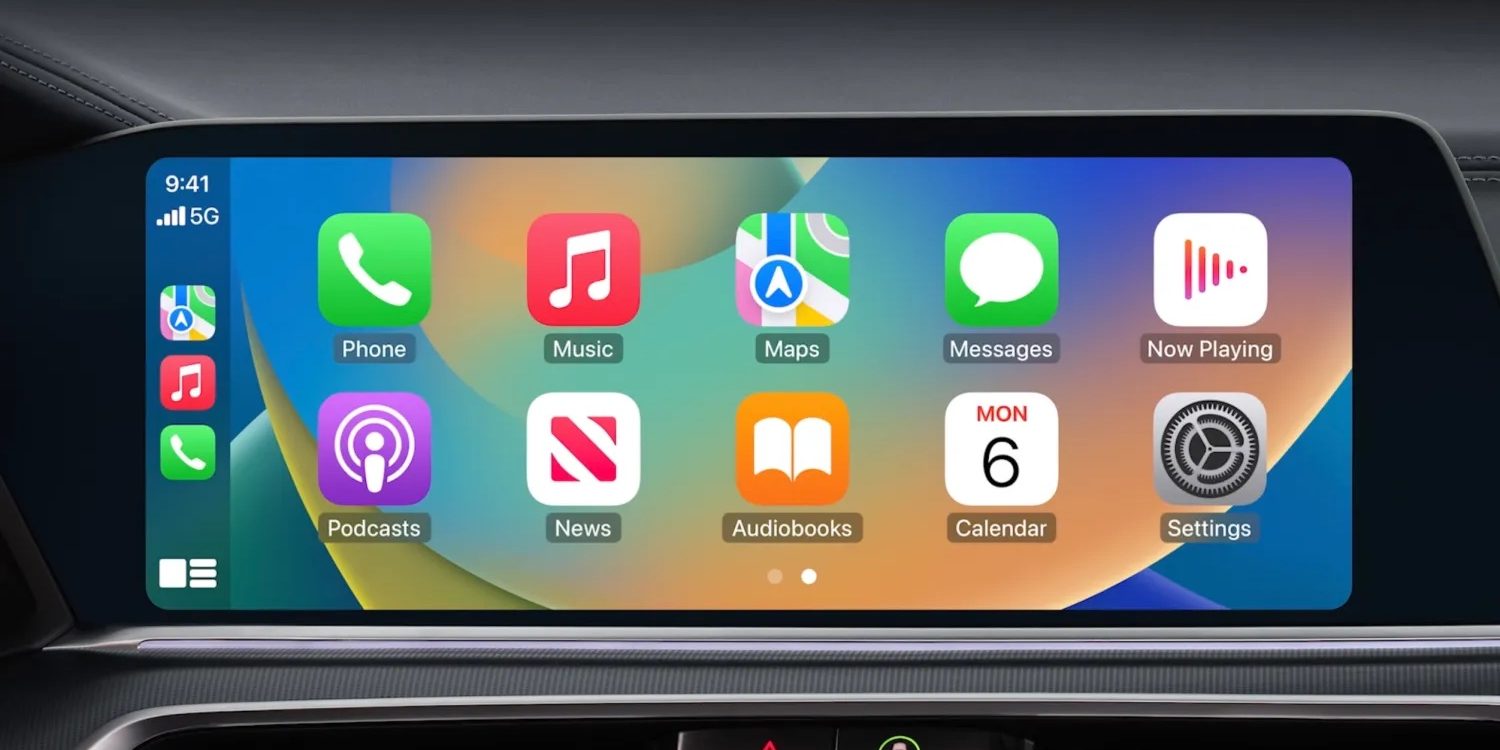GM claims CarPlay and Android Auto cause “unsafe” driver behavior


GM can’t really catch a break on its decision to end support for Apple CarPlay and Android Auto in-vehicle projection modes. And while that choice does have a defensible business purpose (more on that in a moment), recent comments from Tim Babbitt, GM’s Head of Product for Infotainment, to Motor Trend seem like an unforced error — making an already unpopular move feel even less justifed.
Specifically, Babbitt claimed that frequent freezes, disconnections, and bugs with CarPlay and Android Auto cause drivers to look at their phones because the projection systems aren’t behaving as intended. This “totally defeats” the purpose of those projection systems, and takes the eyes of drivers off the road — the unsafe driver behavior referred to in the title of this article.
There’s not much more to Babbitt’s reasoning here, except for the context that such issues are more common with Android Auto because of GM’s practical inability to properly validate its vehicles against the full ecosystem of Android devices (and re-validate with every system OTA those devices receive). This is at least a sympathetic claim: Google really is the one holding the ball when it comes to ensuring all Android devices behave similarly when in Android Auto projection mode, though vehicle manufacturers are still the final “check” on that behavior when all is said and done.
The comments were made during a press event for the Bazer EV, and I am sure that GM continues to face almost unending inquiry about dropping CarPlay and Android Auto from basically every automotive journalist. GM’s PR provided the following statement in response to Motor Trend’s article:
“We wanted to reach out to clarify that comments about GM’s position on phone projection were misrepresented in previous articles and to reinforce our valued partnerships with Apple and Google and each company’s commitment to driver safety. GM’s embedded infotainment strategy is driven by the benefits of having a system that allows for greater integration with the larger GM ecosystem and vehicles.”
General motors
City Dwellers’s Take
On some level, I can empathize with what Babbitt is saying. Especially with Android Auto, where the number and variety of Android handsets causing compatibility issues is certainly real. This diversity has caused problems with the wider ecosystem of services, software, and accessories since Android’s earliest days. But I’m far from convinced that this is GM’s real motivation behind its decision to drop CarPlay and Auto.
I have seen zero evidence that CarPlay presents anything like this difficulty to OEMs, and that’s where Babbitt’s comments about safety really start losing steam. iPhones generally run the same version of iOS within 5 or so years of hardware generation, and there are an order of magnitude fewer iPhone models actively in use on Earth than Android phones. iPhones being a very consistent development target is a very real advantage of the iOS platform from an outside developer perspective. Have I experienced CarPlay connectivity issues? Sure. Very early implementations in Porsche vehicles were finicky, and I have no doubt that other manufacturers have less-than-perfect behavior with CarPlay. But in general, even Mazda’s positively ancient head unit stack worked very reliably for me with CarPlay (barring wireless mode, which sucks on pretty much every car I’ve tried).
And even if you take Babbitt at his word here that Android Auto and CarPlay are so buggy that they constitute a legitimate safety issue, the idea that native infotainment eliminates drivers using their phones is facially absurd to me. No native vehicle infotainment system is going to display full-length text messages while a vehicle is in motion, or play Netflix, or allow a driver to do one of a dozen other things that are objectively unsafe to do while operating a vehicle. Native infotainment makes such behavior even easier if you actually understand and have used Android Auto, in particular. Android Auto makes it notably difficult to access your phone’s standard interface while it’s in operation, specifically to discourage a driver reaching for the phone. CarPlay, admittedly, doesn’t do this, but Auto seems to be the platform targeted more so as causing the “unsafe” behavior discussed here because of difficulties in controlling for end user hardware.
This feels like yet another sidestep of GM’s real motivation for eliminating CarPlay and Android Auto: Software subscription revenue. If GM is not the owner of the “portal” to services like music streaming or whatever other content you might choose to access in your car, GM has no opportunity to sell you those services and earn a commission. Personally, I also don’t see anything morally wrong about this. GM is running a for-profit business, not a charity. It’s not like Google and Apple are selling you software and services out of the goodness of their own hearts, either — consumers are just voicing their very understandable preference for an integrated ecosystem.
I think GM needs to just take the “L” on this CarPlay / Android Auto debacle and own up to the fact that this is a business decision made in order to achieve a business objective. Let the marketplace decide if that decision has enough benefits to outweigh the drawbacks. In other words: Let your product speak for itself. If customers decide GM’s native infotainment platform provides an experience they like, I suspect those customers will use that platform. If they don’t? They’ll do what customers do and vote with their wallets. The more rationalizing and sidestepping GM does, the bigger a hole it digs itself, and the less confidence it appears to have in its convictions.
FTC: We use income earning auto affiliate links. More.